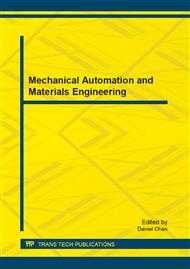p.627
p.631
p.635
p.640
p.645
p.650
p.655
p.660
p.664
Development of Automatic Hot-Water Insulation System for the Weaned Piglets of Nursery Using Biogas-Combustion
Abstract:
This study is aim to develop an insulation system which have a burner using the biogas as fuel for the nursery of the pig farm and a ventilation system to maintain the air quality of the nursery. To eval uate the uniformity and the insulation effect of the heating insulation, this study investigated the temperature and the relative humidity of different locations and carbon dioxide concentration of the nursery in the conditions of the hot water temperature 70°C, the hot water flow rate 0.045 m3/min, the indoor temperature 28°C, the stocking density 1.4 pig/m2 and four different frequencies of the ventilation system. The result shows that the insulation system can not only maintain the indoor temperature stability and uniformity and keep the temperature that weaned piglets desired (28°C), but also display that the magnitude of the temperature change is extremely small (<± 0.1°C). The relative humidity and the concentration of the carbon dioxide decreased with the increasing of the ventilation frequency. The difference of the temperature was about 0.9-1.03°C and the difference of the relative humidity was about 3.87-4.92%. The heating system can reduce the emissions of the greenhouse gas and save the electric cost of heating-lamps, and it is feasible to operate and adjust the suitable temperature for the growth environment of weaned piglets.
Info:
Periodical:
Pages:
645-649
Citation:
Online since:
August 2013
Authors:
Keywords:
Price:
Сopyright:
© 2013 Trans Tech Publications Ltd. All Rights Reserved
Share:
Citation:


